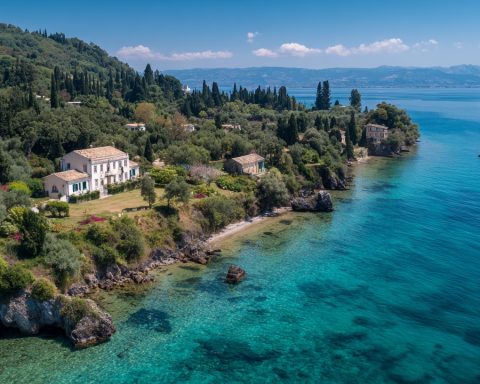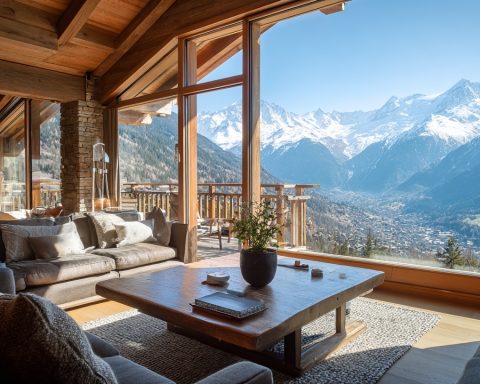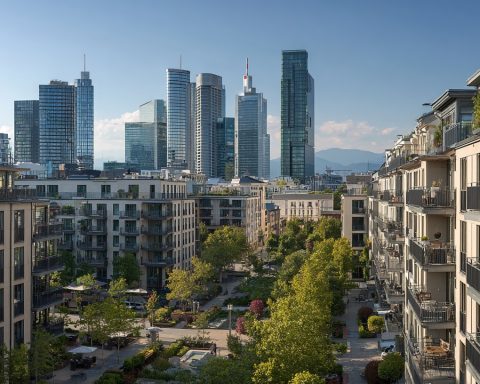Residential Real Estate in Madrid (2025)
Market Overview & Current Conditions
Madrid’s property market entered 2025 on a strong upswing, building on a stellar 2024. Both the broader region (Comunidad de Madrid) and the city of Madrid saw double-digit growth in home sales in 2024 thepropertyfinders.com. Over 88,000 property transactions took place in the region (up ~16% YoY) – about 12.6% of all sales in Spain – with roughly half of these (45,000+) in Madrid city thepropertyfinders.com. Demand has been bolstered by a robust local economy (Madrid’s GDP grew ~3% in 2024) and a resilient job market (unemployment ~9% vs ~10.6% nationally) assets.cushmanwakefield.com. Low interest rates earlier in the cycle and pent-up demand post-pandemic further fueled buyer activity.
Home prices have surged to new heights. By end of 2024, Madrid capital’s average second-hand home price reached about €4,278 per m², up 13.6% year-on-year – one of the largest annual jumps on record elboletin.com. This far outpaced Spain’s national price growth (~2–3% nationally elboletin.com), reflecting Madrid’s supply-demand imbalance and its status as a magnet for both domestic and international buyers. In fact, Madrid and other high-demand regions (e.g. Balearic Islands) hit all-time high prices in 2024 amid “historic increases” driven by limited housing stock and growing demand elboletin.com.
Supply remains tight. Experts estimate Spain faces a housing deficit (on the order of ~200,000 homes nationally) after years of under-building blog.urbanitae.com blog.urbanitae.com, and Madrid exemplifies this shortage. New housing construction has lagged far behind household formation. Even as developers ramp up projects (see New Developments below), the influx of people – Madrid’s population surpassed 7 million in 2023 blog.urbanitae.com – means demand continues to outstrip supply. As a result, competition for available homes (especially in central areas) is intense, and bidding wars or quick sales are common. This seller’s market dynamic is expected to persist into 2025, keeping upward pressure on prices.
Pricing Trends & Top Districts
Price gains have been broad-based across Madrid’s neighborhoods, though the scale varies. In 2024, 19 of 21 districts in Madrid saw prices rise, with 14 districts up over 10% year-on-year elboletin.com. Some traditionally upscale areas experienced explosive growth: for example, the Retiro district led with a staggering +39.3% annual jump in 2024 elboletin.com, as buyers flocked to its mix of park-side living and luxury new developments. Other high-end districts like Chamberí (+22.6% YoY) and Salamanca (+18.7% YoY) also saw sharp rises elboletin.com, reflecting renewed demand for prime city-center properties.
Meanwhile, more affordable districts in the south saw solid if slightly lower growth (e.g. Carabanchel +10.4%, Centro +1.4%) elboletin.com. Virtually all areas are now above pre-pandemic price levels, with many at record highs. Table 1 compares average prices per square meter in selected districts as of end-2024, illustrating Madrid’s enormous price gap between its most exclusive zones and its peripheral areas:
Table 1. Madrid Residential Prices and Rental Yields by District (2024)
| District | Avg. Sale Price (€/m²) | Gross Rental Yield (%) |
|---|---|---|
| Salamanca (prime) | €9,621 elboletin.com | 3.0% blogprofesional.fotocasa.es |
| Chamberí (prime) | €7,937 elboletin.com | 3.6% blogprofesional.fotocasa.es |
| Retiro (prime) | €7,897 elboletin.com | 3.3% blogprofesional.fotocasa.es |
| Chamartín (prime) | €6,970 elboletin.com | 3.9% blogprofesional.fotocasa.es |
| Madrid City Avg. | €4,278 elboletin.com | ~4–5% globalpropertyguide.com blogprofesional.fotocasa.es |
| Arganzuela (central) | ~€5,100 (est.)¹ | 5.1% blogprofesional.fotocasa.es |
| Carabanchel (outer) | €2,816 elboletin.com | 8.1% blogprofesional.fotocasa.es |
| Villaverde (outer) | €1,980 elboletin.com | 11.9% blogprofesional.fotocasa.es |
¹ Arganzuela’s average price is estimated from its sub-neighborhoods (~€4,900–€5,200/m² in late 2024 bankinter.com bankinter.com).
The Salamanca district remains Madrid’s most expensive area – with a median around €9,600/m² elboletin.com – and contains the priciest neighborhood in the entire country (Recoletos, ~€10,473/m²) bankinter.com bankinter.com. Other elite barrios like Jerónimos (Retiro) and Almagro (Chamberí) average €8,500–€9,000+ per m² bankinter.com bankinter.com. By contrast, working-class districts in the south (Villaverde, Vallecas, etc.) average under €3,000/m² elboletin.com. The price ratio between the most exclusive quarter (Salamanca/Recoletos) and the cheapest (e.g. Entrevías in Puente de Vallecas) is roughly 5:1 or greater bankinter.com bankinter.com. This highlights the micro-market nature of Madrid real estate – location and neighborhood amenities are paramount.
Notably, some traditionally mid-range areas have become “hot neighborhoods” due to redevelopment and lifestyle trends. Arganzuela (south of the city center), for instance, saw prices jump ~17% last year elboletin.com as buyers seek its new-build condos around Madrid Río Park. Similarly, Moncloa-Aravaca (northwest) climbed ~19% elboletin.com, partly thanks to luxury projects in Aravaca and demand for spacious homes. Even peripheral suburbs in the metro area had >10% gains (e.g. Boadilla del Monte +20.8%, San Sebastián de los Reyes +18% YoY) elboletin.com, reflecting how the boom extended beyond the city core.
Overall, Madrid’s residential prices are at peak levels (averaging ~€5,500/m² for the city including all housing types by end-2024) elboletin.com elboletin.com, yet buyer appetite remains strong going into 2025. Housing affordability is a growing concern – the gap between local incomes and home prices is widening, especially in central districts. This has shifted some demand to outer zones and fueled interest in renting (see below) as well as in new development areas offering fresh supply.
Rental Market Performance
Madrid’s rental market is red-hot, with surging rents and low vacancy. Average asking rents in the city hit an all-time high in 2024, reaching about €20.7 per m²/month (December 2024) – a +15.3% yearly increase globalpropertyguide.com. This makes Madrid the second most expensive rental city in Spain, just behind Barcelona globalpropertyguide.com. For a typical 80 m² apartment, that equates to roughly €1,650 per month in rent. The rental spike has been most acute in traditionally cheaper neighborhoods: rents in outlying districts (San Blas, Carabanchel, etc.) jumped 18–22% last year, far outpacing upscale areas gerah-realestate.es. This compression of rent gaps means even lower-income areas are seeing tenants squeezed by rapidly rising costs.
Despite higher rents, yields for landlords remain moderate because purchase prices have also climbed. Gross rental yields in Madrid average around 4.8% for apartments globalpropertyguide.com. However, yields vary widely by location and property type (see Table 1 above). In blue-chip central districts like Salamanca, extremely high purchase prices mean yields barely reach ~3% blogprofesional.fotocasa.es. By contrast, investors in low-cost areas like Villaverde or Puente de Vallecas can obtain yields of 9–12% blogprofesional.fotocasa.es – some of the highest urban rental returns in Spain. Citywide, Madrid’s residential yield (around 5% in 2024) actually trails the national average (~6.7%) blogprofesional.fotocasa.es blogprofesional.fotocasa.es, reflecting the capital’s pricey valuations and strong owner-occupier demand.
Rental demand is buoyed by young professionals, students, and expatriates who often prefer renting in the city. Additionally, many would-be first-time buyers are renting longer due to affordability issues and higher mortgage rates. This intense demand, versus a limited rental stock, has pushed the city’s rental occupancy rates above 95% in popular areas (vacancy is extremely low). Some relief may come from Build-to-Rent developments in the pipeline (investors are targeting residential rental projects given high demand) cbre.es, but these will take time to materialize.
Importantly, Spain introduced new rental regulations in 2023–2025 aiming to moderate rent inflation. Effective January 2025, the government implemented a Housing Lease Reference Index (IRAV) to cap rent increases for renewing leases globalpropertyguide.com. This new index replaces prior temporary rent caps (2–3% limits during 2022–24) globalpropertyguide.com. The IRAV ties allowable rent hikes to a formula involving inflation but aims to “avoid extreme fluctuations” and keep increases modest globalpropertyguide.com. It applies in areas declared “stressed markets” – likely including most of Madrid – and is part of the new Housing Law 12/2023 globalpropertyguide.com. In practice, this means many Madrid landlords will be limited in raising rents on existing tenants beyond a few percent annually, which could cool rent growth after the recent dramatic surge. New leases, however, can start at market rates; thus the overall rent level in Madrid is still expected to rise, though perhaps at a slower pace.
Buyer Demographics & Demand Drivers
Madrid’s buyer pool is diverse, but a few trends stand out. Local Spanish buyers (Madrileños) remain the majority in the city, yet foreign purchasers are increasingly significant, especially at the high end. In 2024, foreigners accounted for roughly 12% of all home purchases in the Madrid region thepropertyfinders.com. Notably, the vast bulk of those foreign buyers (88%) are residents in Spain thepropertyfinders.com – i.e. expatriates or immigrant families living and working in Madrid. Only about 12% of foreign buyers were non-resident investors or second-home seekers thepropertyfinders.com, a far lower share of pure overseas investors than in coastal Spanish markets. This suggests Madrid’s allure is tied to its role as an international business and education hub attracting long-term foreign residents (from Europe, Latin America, the US, etc.) who integrate locally.
Foreign demand is heavily skewed toward the luxury segment. Overseas buyers pay on average ~36% more per square meter than Spanish domestic buyers nationwide thepropertyfinders.com, and the gap is likely similar in Madrid. In 2024 the average price paid by foreign buyers in Spain was €2,306/m² vs €1,686 for locals thepropertyfinders.com. Madrid’s overall average (€3,353/m² in 2024 region-wide) is much higher thepropertyfinders.com, reflecting the city’s affluent market. Ultra-wealthy non-resident purchasers from the USA and Latin America have made a splash: for instance, Americans buying in Madrid paid ~€3,750/m² on average, and Venezuelan buyers topped all at €6,175/m² thepropertyfinders.com. Many target trophy properties in barrios like Salamanca, driving up the prime segment.
Domestic buyer demand is driven by Madrid’s strong fundamentals. The city enjoys rising population and employment, drawing job-seekers and young professionals from across Spain (and Europe). Mortgage interest rates did rise in 2023–2024 (following ECB hikes), but Spanish banks have adapted with longer terms and mixed fixed-rate offers, and mortgage lending actually rebounded by +14% in 2024 globalpropertyguide.com after a dip in 2023. Improved credit availability, combined with expectations of future price appreciation, has encouraged many locals to buy despite higher financing costs. Furthermore, as a generational trend, older homeowners often help younger relatives with down payments, sustaining first-time buyer activity even as prices climb.
Lifestyle factors also spur demand. Madrid is seen as a safe, cosmopolitan city with top-tier amenities (universities, hospitals, culture, gastronomy), which attracts both retirees and mobile remote workers. The post-pandemic embrace of flexible work has enabled some affluent buyers (domestic and foreign) to choose Madrid for its quality of life, even if their companies are elsewhere. Additionally, tourism and short-term rentals have some impact – certain investors buy apartments to rent on platforms like Airbnb (though new regulations are more restrictive on short-term lets in residential buildings). All these factors combined have kept buyer demand remarkably robust.
New Development Zones and Housing Supply
To tackle the housing crunch, a wave of major development projects is underway or planned, promising to reshape Madrid’s real estate map over the next decade. In late 2023, city authorities approved new urban plans to unlock 10 strategic development areas, which together could add over 200,000 new homes to the metro area in coming years blog.urbanitae.com blog.urbanitae.com. These include:
- Madrid Nuevo Norte (MNN) – Europe’s largest urban regeneration project. This ambitious plan will transform former rail yards north of Chamartín Station into a new business district and residential hub. Covering 5.6 km of land, MNN will create 10,500 new homes (with a portion designated as affordable housing) and millions of square meters of office and retail space blog.urbanitae.com blog.urbanitae.com. Construction begins in 2025, and the project will add entire new neighborhoods (“Malmea-San Roque-Tres Olivos”, “Las Tablas Oeste”, and a Chamartín Business Center skyscraper cluster) blog.urbanitae.com. Madrid Nuevo Norte is a flagship initiative expected to deliver housing, parks, and modern offices through late 2020s and 2030s.
- Southeast Developments (“Desarrollos del Sureste”) – A massive expansion on Madrid’s eastern and southern periphery. Several huge tracts of land, some long-delayed since the 2008 crisis, are now being built out:
- Valdecarros: the largest single project, aiming for ~50,000 homes developed over the next decade blog.urbanitae.com.
- Los Berrocales: ~22,000 homes; notably the first residents are expected by 2025, as infrastructure is in place blog.urbanitae.com.
- Los Ahijones: ~19,000 homes with planned metro extensions and highways, construction underway blog.urbanitae.com.
- Los Cerros: ~14,300 homes, envisioned as a green, high-rise district with significant parkland blog.urbanitae.com.
- El Cañaveral: ~14,000 homes (a new town which already has thousands of inhabitants) blog.urbanitae.com.
Together, these southeast developments could eventually house over 100,000 new households blog.urbanitae.com, introducing entire new suburban communities.
- Operation Campamento – A landmark public-sector housing plan to reuse former military land in southwest Madrid. Approved in 2023, this project will deliver 10,700 new homes on 211 hectares, with 60% designated as subsidized or price-controlled units for affordable housing blog.urbanitae.com. This is a key effort to provide middle-class housing and ease pressure in the resale market. Early works are starting in 2025, backed by broad political support gettyimages.com gettyimages.com.
- Other Infill Projects – Solana de Valdebebas (adding 1,400 homes in the north, 45% affordable) blog.urbanitae.com; redevelopment of the former Carabanchel Prison site (640 homes approved) blog.urbanitae.com; Ribera del Calderón (1,500 homes to be built on the old Vicente Calderón stadium site along the river) blog.urbanitae.com; and future plans like “Nueva Centralidad del Este” (up to 20,000 homes near Madrid’s eastern M-40 ring) blog.urbanitae.com and “Nuevo Madrid Sur” (3,000 homes at Abroñigal) blog.urbanitae.com.
These new development zones represent huge opportunities to alleviate Madrid’s housing shortage. Many incorporate infrastructure upgrades (new metro stations, highway links) and a high percentage of green spaces and affordable units, aligning with modern urban planning principles. For developers and investors, they offer attractive large-scale projects; for homebuyers, they promise future supply of more moderately priced new homes. However, timelines are long – most will span the next 5–15 years. In the near term (2025–2027), supply will still lag demand, since currently only a fraction of these homes are under construction. Thus, the immediate market outlook remains one of tight inventory – which supports prices – until these new districts come online in significant numbers.
Regulatory & Policy Changes
Government policy has begun to play a larger role in Madrid’s real estate dynamics, especially on housing affordability:
- National Housing Law 12/2023 (“Ley por el Derecho a la Vivienda”) – Enacted in May 2023, this law introduced rent caps (as discussed) and allowed local authorities to declare “stressed housing areas” where stricter controls apply. In such zones (very likely including central Madrid), large landlords (with >10 properties) cannot raise rents on new leases above the previous contract’s rent globalpropertyguide.com, and overall rent increases are limited by the new IRAV index globalpropertyguide.com. The law also provides for incentives for affordable housing and discourages leaving properties vacant (some regions consider extra taxes on empty units). While proponents say it will protect tenants, some industry groups fear it could disincentivize rental investment. So far, Madrid’s rental growth has been so strong that even with caps, new tenancy rents reset at high market levels.
- Golden Visa Program Changes – Spain has curtailed its “golden visa” scheme for property buyers. By 2023 the government moved to end the golden visa route via real estate investment, amid criticism that an influx of foreign investor money was “exacerbating housing affordability issues” in big cities like Madrid and Barcelona globalpropertyguide.com. Existing visa holders are grandfathered in, but new applications for residency in exchange for buying high-value property have effectively been halted globalpropertyguide.com. This might slightly dampen demand from certain non-EU investors. However, since most foreign buyers in Madrid are resident (not purely investment-driven) thepropertyfinders.com, the impact on the capital’s market is expected to be limited.
- Urban Planning & Zoning – The Madrid City Council in late 2023 approved new urban planning regulations to streamline development and promote higher-quality, sustainable construction blog.urbanitae.com. This includes updated building codes for energy efficiency and accessibility, and faster permitting for projects. These regulatory tweaks should facilitate the big development zones mentioned above, enabling them to progress more quickly. Additionally, the city is encouraging office-to-residential conversions in cases of obsolete office buildings. In the past three years, over 100,000 m² of underused office space in Madrid have been converted to housing assets.cushmanwakefield.com assets.cushmanwakefield.com – a trend supported by policy to help increase housing supply while reducing commercial vacancies.
- Economic Policy & Finance – Broader economic policies (interest rate changes, tax incentives) also affect real estate. The European Central Bank’s rate hikes in 2022–23 raised Spanish mortgage rates sharply, but by 2025 rates are stabilizing. There are discussions in Spain to revive tax deductions for home purchase or to expand subsidized mortgages for young buyers, though nothing concrete yet. Meanwhile, public investment in housing is rising: Spain launched a €1.3 billion program in 2024 to promote industrialized construction of affordable homes (using EU Recovery funds) reuters.com. Madrid stands to benefit from these initiatives aimed at boosting social housing stock via faster prefab building techniques.
Overall, the policy environment is shifting toward greater market intervention to improve affordability. In the short run, measures like rent caps may slightly temper rental yields (a consideration for landlords) while new development rules and public projects aim to increase long-term supply. Thus far, none of the new regulations have cooled Madrid’s sales market meaningfully – 2024’s record growth attests to that – but their effects will be monitored in 2025 and beyond.
Outlook: 2025–2027 Forecast
All signs point to continued expansion of Madrid’s real estate market in the medium term, albeit at a more moderate pace than the recent past. Analysts expect Madrid to remain one of Europe’s most attractive property markets, supported by its solid economy and undersupply of housing thepropertyfinders.com. Here is the consensus outlook through 2027:
- Home Prices: After the double-digit surge of 2024, price growth may normalize to mid-single digits annually. Industry forecasts project Spanish house prices to rise around +5.3% in 2025 cbre.es, and Madrid could slightly exceed that given its higher demand. Rising construction (new supply) from 2025–2027 may gradually ease the upward pressure, particularly in suburban areas as new homes hit the market. However, as long as supply only meets roughly half of demand (as is currently the case) cbre.es, prices are poised to keep climbing. By 2027, Madrid’s average values could be another ~15% higher than today, barring any major economic shocks. Price growth will likely be uneven – prime locations and developments with unique appeal (e.g. around new parks or transit hubs) should outperform, while any oversupplied segments could see flat prices.
- Sales & Demand: Transaction activity might cool slightly from the frenzied pace of 2024, but is expected to stay robust. Higher borrowing costs will price out some marginal buyers, yet population growth and investment interest provide a floor for demand. Madrid’s share of total Spanish property sales (currently ~12%) may inch up as more people relocate to the capital for opportunities globalpropertyguide.com. One potential headwind is if Spain’s economy slows – forecasts see GDP growth easing to ~2% in 2026 globalpropertyguide.com. Even so, Madrid’s status as an “economic engine” of Spain (outgrowing the Eurozone average) assets.cushmanwakefield.com assets.cushmanwakefield.com should keep housing demand relatively resilient through 2027.
- Rents: Rental prices are likely to keep rising into 2025, though perhaps not at the 15%+ annual rate seen in 2024. The new rent control index (IRAV) will limit increases on existing tenancies to more normal levels (likely in the low-single-digit percent range) globalpropertyguide.com. However, high demand and tenant turnover mean new lease rates will still climb. A moderation to mid-single-digit rent growth is conceivable by 2026–27 if more rental supply comes online (via build-to-rent projects and individual owners drawn by high yields). Even in a slower scenario, Madrid’s average rent could approach €23–€25/m² by 2027 (vs ~€21 now). Rental yields might rise slightly if price growth slows while rents climb, potentially pushing average yields back above 5%. Investors will be watching regulatory changes closely – any further rent control measures or tax changes could impact returns.
- Development & Supply: The 2025–2027 period will see visible progress on big developments. By 2027, parts of Madrid Nuevo Norte will likely be under construction or even delivering initial commercial space, and thousands of homes in Valdecarros, Berrocales, etc., will be completed or nearing completion. Thus, the end of this forecast horizon should mark the start of a new supply wave in Madrid. This is good news for buyers – more choice and slightly less pricing pressure – but it will take sustained building beyond 2027 to truly balance the market. Construction costs and bureaucracy remain challenges, but the public and private sectors are aligned on accelerating housing delivery.
- Risks: Key risks to the outlook include macroeconomic factors (interest rates, recession risk) and policy shifts. A sharp rise in unemployment or credit crunch could dampen demand significantly. Likewise, if inflation resurges and forces interest rates even higher, buyer affordability would be pinched, potentially cooling prices. On the flip side, any unexpected policy intervention – e.g. stricter housing taxes, expanded rent freezes, or a large government housing program – could alter investor sentiment. Barring such shocks, the baseline expectation is steady growth: Madrid real estate will likely continue its upward trajectory, just at a less breakneck speed than the post-pandemic boom.
In summary, Madrid’s residential sector in 2025 is booming and set to remain a top performer through 2027. Strong fundamentals (population growth, limited supply, capital city status) point to sustained demand. While price and rent rises may moderate, the overall trend is positive. Madrid is firmly on the radar of international investors and will continue to attract people from across Spain and beyond, underpinning the real estate market’s vitality.
Commercial Real Estate in Madrid (2025)
Office Market: Flight to Quality
Madrid’s office sector has rebounded and evolved in the wake of the pandemic. Leasing activity surged in 2024 – annual office space take-up exceeded 570,000 m², beating forecasts by ~20% assets.cushmanwakefield.com assets.cushmanwakefield.com. This momentum carried into early 2025, with about 117,000 m² rented in Q1 2025 alone assets.cushmanwakefield.com. Corporate occupiers are active again, especially for prime spaces, even as hybrid work trends continue.
A defining trend is the “flight to quality.” Demand is overwhelmingly concentrated in modern, high-grade buildings (Class A or top-tier B+). In fact, nearly 70% of all space leased has been in these quality buildings recently assets.cushmanwakefield.com. Companies are using office moves as an opportunity to upgrade to better locations, newer builds, or green-certified properties that help entice employees back to the workplace. As a result, vacancy in prime buildings is extremely low – the availability rate for Class A/B+ offices in Madrid is now under 2.5% assets.cushmanwakefield.com. Within the M-30 central ring road, overall office availability has dropped below 3% assets.cushmanwakefield.com, which is practically full occupancy for desirable spaces. Any newly vacated prime space in the CBD (Central Business District) tends to get leased immediately assets.cushmanwakefield.com.
By contrast, older or fringe offices see higher vacancy. Citywide, the office vacancy rate is around 8–9% in early 2025 assets.cushmanwakefield.com, but this is mostly in secondary locations or aging buildings that tenants are leaving. Notably, some submarkets outside the city center have softened – as companies relocate inward or to transit-connected hubs, outdated offices in peripheral areas have struggled. This has led to an interesting phenomenon: some obsolete offices are being converted to residential use (over 100,000 m² of such conversions in recent years) to reduce surplus office stock and address housing needs assets.cushmanwakefield.com assets.cushmanwakefield.com.
Prime office rents are rising as high-end space is scarce. In Madrid’s CBD (e.g. Castellana axis, Salamanca/Chamberí business zones), headline prime rent has reached about €42 per m²/month in Q1 2025 assets.cushmanwakefield.com assets.cushmanwakefield.com – a record high. Landlords of top properties have been able to push rents up ~5–10% over the past year, and forecasts see a bit more growth (perhaps +2–3% in 2025) as demand stays strong cbre.com. In secondary areas, rents are mostly stable; some fringe districts even have flat or slight decreases if oversupply exists. But overall, office rental growth in Madrid is positive, especially for centrally located, newly built or refurbished buildings.
Geographically, the market is gradually expanding outward due to the center’s capacity constraints. With the M-30 interior nearly “out of space” in prime offices assets.cushmanwakefield.com, more requirements are spilling into the Decentralized submarket (between the M-30 and M-40 ring roads). In late 2024 and early 2025, take-up in these outer zones picked up ~27%–47% quarter-on-quarter assets.cushmanwakefield.com assets.cushmanwakefield.com. Areas like Campo de las Naciones (near IFEMA fairgrounds) and Manoteras in the A-1 corridor saw a flurry of deals, as they offer large floor plates and modern campuses that central Madrid cannot assets.cushmanwakefield.com assets.cushmanwakefield.com. Even further out, some peripheral hubs (e.g. in Pozuelo or Alcobendas) had strong leasing at end of 2024 assets.cushmanwakefield.com, though Q1 2025 in the periphery cooled a bit after big year-end transactions assets.cushmanwakefield.com.
Looking ahead, office development is on the agenda – notably as part of Madrid Nuevo Norte, which will create a new business district with several skyscrapers and millions of sq. meters of offices by late 2020s. In the interim (2025–27), a handful of new office projects in existing districts (renovations in AZCA/Chamartín, new builds in Méndez Álvaro, etc.) will come online, but supply is limited. Hence, office vacancy is expected to stay around the mid-single digits, and prime rents should hold firm or inch upwards. Many tenants are willing to pay a premium for energy-efficient buildings with amenities, and such space remains in short supply.
In terms of investment, Madrid offices saw somewhat muted investment volumes in 2024 (rising interest rates made some investors cautious), but activity is picking up in 2025. Investors are primarily targeting core, leased assets given the stable outlook – for example, a Korean fund acquired a prime office on Calle Claudio Coello for ~€40 million recently, reflecting confidence in Madrid’s high-end office segment (prime office yields are ~4.4%) assets.cushmanwakefield.com assets.cushmanwakefield.com. As financing conditions improve by 2026 (if interest rates stabilize or fall), Madrid’s office investment market could heat up further, since international capital views Madrid as undervalued relative to other major European capitals.
Retail & Hospitality: Revival with Tourism
Madrid’s retail real estate sector is enjoying a post-pandemic revival. Foot traffic in shopping districts has rebounded strongly thanks to rising consumer spending and record tourism. Retail sales in Spain are projected to grow ~3.5% in 2025 cbre.es, and Madrid – as a top destination for both domestic shoppers and international visitors – is reaping the benefits. Prime retail corridors like Gran Vía, Preciados, Serrano, and Castellana have essentially recovered to pre-2020 levels of rents and occupancy. Madrid is also seeing new retail concepts emphasize customer experience (restaurants, entertainment, flagship stores), a response to e-commerce competition cbre.es.
Notably, the e-commerce boom has leveled off, and retailers are re-investing in physical stores. The slowdown in online sales growth has actually aided the retail real estate market cbre.es – brands realize brick-and-mortar presence in Madrid is still crucial. Vacancy on prime high streets is very low (international luxury brands have snapped up any available units in Barrio de Salamanca’s “Golden Mile”, for instance). In secondary high streets and shopping centers, occupancy is improving too, though rents there remain more tenant-friendly.
Prime retail rents in top Madrid streets are inching up after a dip during COVID. For example, asking rents in the prime stretch of Calle Preciados are again around €250–€300/m²/month for small units, and luxury zones command even more. Landlords are cautiously optimistic, as tourist footfall is hitting new highs – Spain welcomed record tourists in 2023–24, and Madrid had a strong share. Hotels report high occupancy and increases in RevPAR (revenue per room) in 2024 cbre.es, which correlates with more spending in shops and restaurants. The hospitality real estate segment (hotels, hostels, short-term rental apartments) is also expanding: several new hotels opened or are under construction, including five-star and boutique properties catering to luxury travelers.
According to CBRE, hotel metrics in Madrid are on the rise with travelers up +3.4% and climbing room rates cbre.es. This has attracted investor interest in Madrid hotels, especially upscale and “lifestyle” hotels. Additionally, niche segments like serviced apartments and student housing are growing – international students and digital nomads drive demand for co-living and extended-stay units, and developers are responding with such projects.
Overall, Madrid’s retail/hospitality real estate outlook through 2027 is favorable: steady economic growth and tourism (including high-spending visitors from the US, Latin America, and the Middle East) should support rental increases in prime retail. Secondary retail may see slower growth as shopping moves online for convenience goods, but experiential retail (dining, leisure, luxury) in Madrid will thrive. One watchpoint is the potential oversaturation of hotels/Airbnbs in the center – local authorities may impose stricter licensing for short-term rentals to protect long-term housing, which could slightly limit investor activity in that micro-sector. But for now, retail is a bright spot with rising rents, and hospitality properties are in demand.
Industrial & Logistics: High Demand, Low Vacancy
The logistics and industrial real estate market in Madrid is booming thanks to the e-commerce era and the city’s role as Spain’s central distribution hub. Warehouse space around Madrid – particularly in the Corridor along the A-2 highway (toward Zaragoza/Barcelona) and the South corridor (Getafe, Illescas area) – has seen record low vacancies and rising rents. In 2024, occupier demand was so strong that absorption matched the five-year highs, and any new warehouse completion gets leased quickly cbre.es cbre.es.
As of early 2025, the vacancy rate for modern logistics space in the Madrid region is often quoted in the low single digits (sub-5%). In core submarkets near the city, there is effectively zero availability of large, high-spec warehouses. This supply-demand imbalance has driven prime logistics rents upward. Prime rents for big-box warehouses (>= 5,000 m²) in Madrid’s first ring rose by double digits over the past 18 months. They currently stand around €6–€7 per m²/month, and are still trending up modestly as tenants compete for quality space.
On the investment side, logistics real estate has been a star performer. Investor interest remains very high, due to the sector’s strong fundamentals. By late 2024 there was a wave of large portfolio deals in Spain’s logistics sector cbre.es – some of the world’s largest real estate funds and logistics specialists acquired warehouses around Madrid, betting on long-term growth. This flurry of activity actually compressed prime yields (cap rates) for logistics: prime yield dipped to ~4.75%–5.0% by end of 2024, an historically low level, before stabilizing cbre.es. Even with rising interest rates, investors were willing to pay a premium for well-located distribution centers, given the expectation of rent growth and e-commerce resilience.
Going forward, new supply is coming, but perhaps not fast enough. Several million sq. feet of logistics space are under construction around Madrid (notably mega-projects in Illescas, Alcalá, and brownfield redevelopments near M-50). These will deliver through 2025–2026. While they will raise vacancy slightly from today’s ultra-tight levels, most new builds are getting pre-leased or absorbed quickly. So, rent growth is expected to continue albeit at a slower pace – perhaps leveling out by 2026 as supply catches up.
Key trends in Madrid industrial include: last-mile logistics (smaller facilities nearer the city to enable 1-2 hour delivery); cold storage (for food delivery and pharma); and data centers (Madrid is emerging as a Southern European data center hub, with several projects on the outskirts). Each of these niches requires real estate and is attracting development. The city and regional governments are also supportive, designating new industrial land and improving transport links (rail freight improvements, new highways) to bolster Madrid’s logistics capacity.
In sum, Madrid’s industrial real estate segment looks to remain highly dynamic. It offers investors relatively high yields and rental upside, and for occupiers, the challenge will be securing space in the right location. By 2027, we anticipate a more balanced market as significant new warehousing gets built, but Madrid’s central role in Spain’s economy means logistics demand will stay robust.
Commercial Real Estate Investment & Outlook
Madrid is firmly on global investors’ radar across all asset classes of commercial real estate. In 2024, total real estate investment in Spain jumped ~20%, and Madrid as the capital drew a large share of that cbre.es. For 2025, experts forecast another 10–15% growth in investment volumes in Spain cbre.es, with Madrid remaining a prime target. A favorable mix of factors – lower financing costs relative to 2022, a strong US dollar attracting foreign capital to euro assets, and Spain’s solid economic fundamentals – makes real estate investment in Madrid increasingly attractive cbre.es cbre.es.
By sector, investors in 2025 are particularly keen on:
- “Living” sectors (residential, multifamily rental, student housing). The chronic housing shortage and rising rents position residential as a preferred investment sector cbre.es. Build-to-rent apartment blocks in Madrid, for instance, are seeing bidding wars among institutional investors, as they offer stable long-term returns in a undersupplied market.
- Prime offices in core locations. Trophy office properties in Madrid remain priced below those in London, Paris, or Milan, so yield-seeking investors from Europe, North America, and Asia are exploring acquisitions. The emphasis is on new or renovated green buildings – older offices may find less investor appetite unless at a deep discount (with a plan to refurbish).
- Logistics/Industrial. As noted, logistics assets are highly sought after. Large global funds (Prologis, Blackstone, etc.) have been expanding their Madrid warehouse portfolios, and local REITs (SOCIMIs) also favor logistics for growth.
- Hotels. With Madrid’s tourism at record levels, hotel investment is lively. Recent high-profile deals include luxury hotels and conversion of historic buildings into accommodations. Investors expect Madrid will continue gaining as a destination (helped by initiatives like spotlighting the city’s cultural attractions and improved international flight connections).
One emerging theme is ESG (Environmental, Social, Governance) considerations. Both occupiers and investors are focusing on sustainability. Buildings with energy-efficient designs, solar panels, green certifications, etc., are commanding premium rents and prices. Conversely, assets that are “brown” (energy-inefficient) may become stranded or require costly upgrades. The real estate sector is reinventing itself around ESG, installing renewable energy systems and aiming for carbon neutrality in new developments cbre.es. By 2027, expect Madrid’s new office towers, malls, and residential blocks to have cutting-edge green tech – a factor that will also influence values (with green buildings enjoying stronger demand).
Risks and opportunities: On the upside, if interest rates begin to fall by 2025–26 (as some predict), it could unleash another wave of investment as financing becomes cheaper and yields compress further. Madrid could see capital values rise in commercial real estate accordingly. On the downside, any economic hiccup (global or domestic) could slow leasing and make investors more cautious. Political changes could also introduce uncertainty (e.g. different approaches to rent control or taxes after elections). Currently, however, the outlook is largely optimistic – Madrid is ranked among the top European cities for real estate investment prospects in 2025 thepropertyfinders.com. It offers relative stability, quality assets, and growth potential, which will likely keep investors active.
For the medium term (to 2027), expect moderate growth across commercial real estate:
- Offices: stable to rising rents, low vacancy in prime areas, continued decentralization for lack of space, and significant new supply from marquee projects toward 2027+. Office capital values should increase modestly, with yield compression possible if interest rates decline (current prime office yields ~4.25–4.5% could tighten to below 4% by 2027 in a low-rate scenario).
- Retail: high street retail will remain resilient and even see rent appreciation, while secondary retail could be flat. Retail property investment will focus on prime high streets and dominant shopping centers; tertiary retail may face structural challenges.
- Logistics: strong fundamentals persist, but rent growth may temper once new warehouses deliver. Yields are near record lows, so further compression is limited; instead, investors will bank on income growth. There is some risk of overbuilding by 2027 if too many speculative projects complete, but given current low vacancy, the market can likely absorb what is in the pipeline.
- Hospitality and Alternatives: these will become a larger slice of the market. Madrid’s successful tourism means hotels will perform well (assuming no new global travel disruptions). Additionally, alternative assets like data centers, life-science labs, and co-working spaces might attract dedicated investments as those industries expand in Madrid.
In short, Madrid’s commercial real estate is entering a period of expansion and innovation. The city is adapting to new work, shopping, and living patterns post-pandemic, and its property sectors are generally thriving. Stakeholders who focus on quality (be it developing green buildings or owning assets in prime spots) are likely to see the best returns through 2027.
Opportunities & Advice for Investors, Homebuyers, and Developers
Madrid’s dynamic market offers different takeaways depending on your role. Here are key insights and tips for various stakeholders:
- 🔑 For Real Estate Investors: Madrid is a land of opportunity with some caveats. High yields can be found in up-and-coming districts – for instance, working-class neighborhoods like Villaverde or Puente de Vallecas offer yields of ~10% blogprofesional.fotocasa.es, far above the 3–4% in Salamanca’s luxury segment. However, capital appreciation potential is often strongest in central areas undergoing revitalization (e.g. Retiro, which saw nearly 40% price growth last year) elboletin.com. A balanced approach could be to invest in emerging neighborhoods adjacent to prime ones – they benefit from spillover demand and often infrastructure improvements, providing both decent rental income and growth. Keep an eye on new development zones as well: early investment in places like Valdecarros or around the future Chamartín Business Center could pay off as those areas mature. Be mindful of regulatory risks – with rent controls and potential new taxes, plan for compliance and factor that into yield calculations. Overall, Madrid’s status as a safe haven for capital (backed by rule of law and market transparency) makes it a solid long-term bet. Many foreign funds are increasing allocations to Madrid, so riding that wave could be lucrative, but due diligence on location and asset quality is critical.
- 🏠 For Homebuyers: If you are looking to buy a home in Madrid, be prepared and proactive. The market in 2025 is competitive – desirable properties (especially under €500k) can sell in weeks or even days. It’s wise to get mortgage pre-approval and work with a reputable agent. Prices are high and still rising, so waiting might mean paying more later. That said, negotiate where you can: in cases of older flats needing renovation or in areas with multiple new developments, sellers may be more flexible on price. Explore up-and-coming barrios for better value – for example, Tetuán, Arganzuela, or Vicálvaro offer lower prices but are improving in amenities and transport. If you’re priced out of the city center, consider the greater Madrid region; many suburbs (Alcobendas, Pozuelo, etc.) have excellent quality of life and are seeing new housing projects. Also, pay attention to interest rates – after recent increases, mortgage rates might stabilize or even decline by 2026, so locking in a fixed-rate loan in 2025 could secure peace of mind. Use Spain’s mortgage competition to your advantage by shopping around (banks are keen to lend due to the rising market). Lastly, understand the new Housing Law protections as a tenant: if renting now with an aim to buy later, you likely have caps on rent hikes in the interim globalpropertyguide.com, which can help you save for a down payment.
- 🏗️ For Developers & Builders: Madrid is a fertile ground for development, with strong demand across residential and commercial segments. Opportunities abound: there is huge unmet need for affordable housing, so projects that can deliver mid-priced homes (via modular construction, public-private partnerships, etc.) will find ready buyers or tenants. The city’s new urban plans and faster permitting are a green light to move forward on projects in the Southeast and periphery blog.urbanitae.com. Align with government initiatives – for example, incorporating at least 30–40% protected housing in large projects can smooth approvals and tap into subsidies. In the commercial arena, focus on quality and sustainability: offices need to be tech-enabled and eco-friendly to attract tenants in this flight-to-quality environment, and outdated stock will languish. Renovation of older buildings (both residential and commercial) is a big play too, given high end-user prices – luxury refurbishments of classical buildings in Centro or Chamberí have a market among affluent buyers (both Spanish and foreign). Keep an eye on costs: construction costs have been volatile, so prudent budgeting and perhaps securing materials in advance is wise. By 2027, developers who built up land banks in 2023–25 will likely be rewarded, as Madrid’s expansion ensures a steady pipeline of projects. Finally, community engagement and compliance with zoning are key – Madrid’s citizens are increasingly vocal about sustainable growth, so developments with green spaces, transit links, and social infrastructure will not only be more welcome but also more marketable.
Sources: Recent market reports and data have been used to inform this analysis, including CBRE’s Spain Outlook 2025 cbre.es cbre.es, local property registries and notary statistics thepropertyfinders.com thepropertyfinders.com, Fotocasa’s 2024 real estate index elboletin.com blogprofesional.fotocasa.es, Global Property Guide’s Q1 2025 insights globalpropertyguide.com globalpropertyguide.com, and expert commentary from industry groups. These provide a grounded, up-to-date basis for understanding Madrid’s real estate trajectory as of 2025 and beyond. The consensus is clear: Madrid is booming, and while challenges exist (affordability, supply shortages), the coming years look promising for a city that continues to reinvent and grow. assets.cushmanwakefield.com












